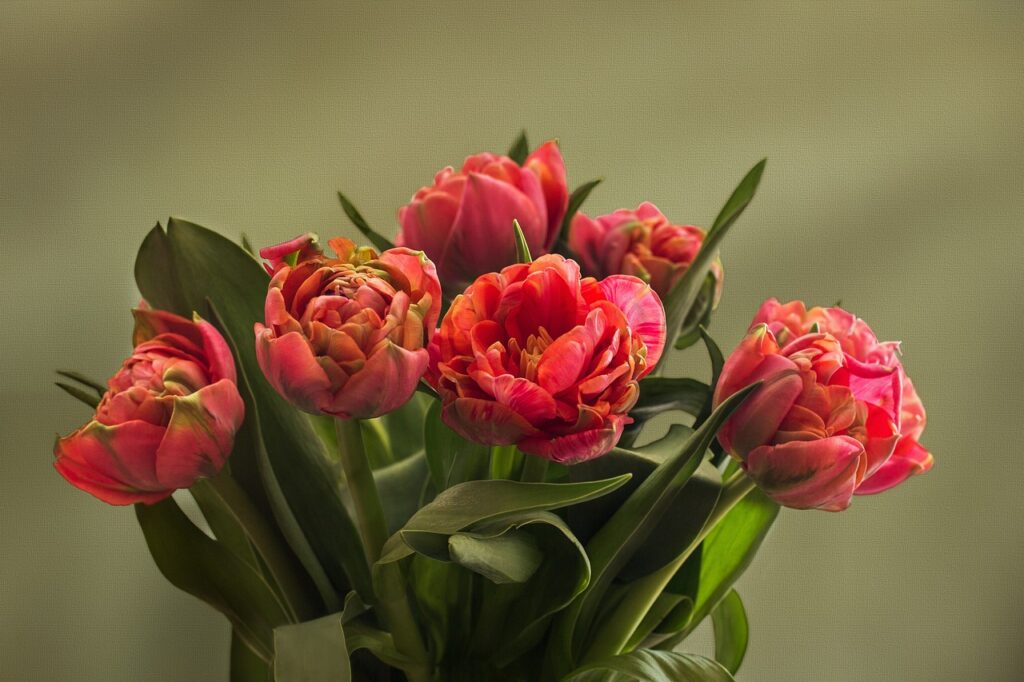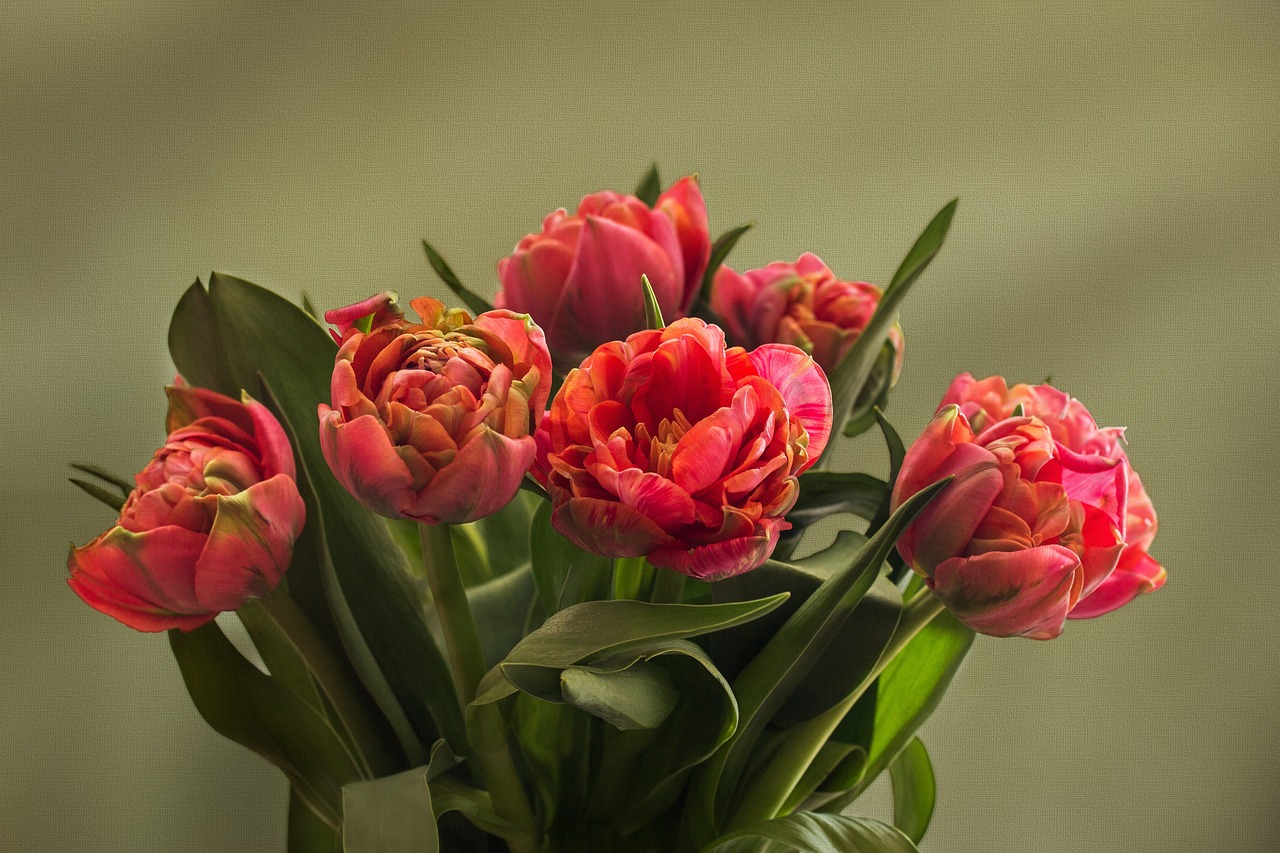Welcome to the world of floral arranging! Whether you are a beginner or a seasoned pro, mastering the art of creating stunning bouquets is a fulfilling and rewarding experience. With the right knowledge and skills, you can transform a simple bunch of flowers into a work of art that will brighten up any room and bring joy to those around you.
In this article, you will learn the principles of color and texture, how to select the perfect flowers and foliage, and how to compose your bouquet to achieve the desired effect. We will also explore different types of arrangements for various occasions, from weddings and birthdays to simple home decor.
With our tips and tricks, you will be well on your way to becoming a master of floral arranging and creating stunning bouquets that will leave a lasting impression. So let’s dive in and discover the beauty and creativity of the art of floral arranging!
Understanding the Principles of Color and Texture
You’ll love how understanding color and texture principles can help you create breathtaking bouquets.
Color theory is crucial in floral arranging as it helps you choose the right combination of hues that complement each other. The color wheel is a great tool that can guide you in selecting the perfect colors for your bouquet. You can go for a monochromatic scheme, where you use different shades of the same color, or a complementary scheme, where you pair colors that are opposite each other on the color wheel. You can also opt for an analogous scheme, where you use colors that are adjacent to each other on the wheel.
Another essential element in creating stunning bouquets is texture pairing. Combining different textures in your arrangement can add depth and interest to your bouquet. You can mix smooth and rough textures, such as pairing smooth roses with fuzzy lamb’s ear or pairing delicate cherry blossoms with spiky thistles. You can also play with different shapes and sizes to create a balanced look. Adding greenery can also help enhance the texture of your bouquet.
By following these principles, you can create a beautiful bouquet that’s not only visually appealing but also evokes emotions and enhances the overall ambiance of any space.
Selecting the Perfect Flowers and Foliage
When picking out your blossoms and greenery, it’s essential to consider the color scheme and texture of the final arrangement.
Keep in mind the season and what flowers are readily available during that time.
For example, in the fall, you’ll find plenty of warm hues like oranges, yellows, and reds, while in the spring, pastels and bright colors are popular.
Take advantage of seasonal options to create a cohesive and striking bouquet.
Incorporating unique elements is another way to make your floral arrangement stand out.
Consider adding foliage with interesting textures or unique shapes, like eucalyptus or succulents.
You can also use unexpected elements like feathers, berries, or even small fruits.
These elements not only add visual interest but can also provide a delightful scent or texture.
Remember, the key is to strike a balance between these special touches and the overall color and texture scheme of the arrangement.
Composing Your Bouquet
To create a visually appealing bouquet, it’s important to carefully compose the different elements of your arrangement. Start by selecting a focal point flower or foliage and build around it.
Use a mix of colors, textures, and shapes to add interest and depth to your bouquet. Consider incorporating unique elements such as berries, branches, or even feathers to give your arrangement a touch of personality.
When composing your bouquet, it’s important to consider the vase or container you’ll be using. If you’re not using floral foam, try using chicken wire or tape to create a grid at the top of your vase. This will help keep your stems in place and allow you to create a more structured arrangement.
Don’t be afraid to play around with the placement of your flowers and foliage until you achieve the desired look. Remember, the beauty of floral arranging is that there are no hard and fast rules. Have fun and let your creativity shine!
Creating Arrangements for Different Occasions
For special events or holidays, it’s essential to choose the right flowers and colors to match the occasion. One of the first things to consider is seasonal considerations. For example, in the spring, you might want to use bright and cheerful flowers like daffodils and tulips, while in the fall, you might want to use warmer colors like oranges, reds, and yellows.
Additionally, it’s important to think about the specific venue where the arrangement will be displayed. For a wedding, you might want to go with more traditional colors like white and light pinks, while for a corporate event, you might want to go with something more modern and sleek.
When creating arrangements for different occasions, it’s also important to consider the size and shape of the arrangement. For a larger venue, like a church or banquet hall, you might want to create a taller and more dramatic arrangement, while for a smaller space, like a table centerpiece, you might want to create something more compact and low.

Additionally, it’s important to think about the overall style and theme of the occasion. For a rustic wedding, you might want to incorporate natural elements like branches or berries, while for a more formal event, you might want to stick with classic flowers like roses or lilies.
By keeping these things in mind, you can create stunning arrangements that perfectly complement any occasion.
Tips and Tricks for Mastering the Art of Floral Arranging
As you start arranging flowers, imagine yourself as a painter, carefully selecting and placing each bloom like a stroke of color on a canvas.
To make the task easier and more efficient, you need to have the right tools and equipment. A pair of sharp scissors or clippers will help you cut stems cleanly, while floral foam or a vase will hold your arrangement in place. You can also use wire, floral tape, or glue to secure your flowers and create different shapes and designs.
Aside from the tools, it’s crucial to know how to care for your flowers. Cut the stems at an angle to help them absorb water, and remove any leaves that will be submerged in the water to prevent bacterial growth. Change the water every day or every other day, and add flower food or a teaspoon of sugar to nourish your blooms.
Keep your arrangement in a cool, well-ventilated place away from direct sunlight or drafts. With these tips and tricks, you can master the art of floral arranging and create stunning bouquets that will brighten up any space.
Frequently Asked Questions
How can I prevent my flowers from wilting too quickly?
To prevent wilting, use flower food and proper hydration. Trim stems at an angle, remove leaves below water level, and change water every few days. Keep in a cool spot, away from direct sunlight and heat sources.
What are some unusual materials or objects that can be incorporated into a floral arrangement?
Looking for ways to add some pizzazz to your floral arrangements? Unconventional accents like feathers, seashells, and fruit can create a unique look. Don’t be afraid to experiment with creative color schemes to really make your arrangement pop!
How do I properly care for and maintain my floral arrangement once it is completed?
To keep your floral arrangement looking fresh and beautiful, proper maintenance is key. Change the water every few days, trim the stems at an angle, and keep it away from direct sunlight. These longevity tips will ensure your flowers last as long as possible.
Are there any common mistakes to avoid when arranging flowers?
When arranging flowers, common mistakes to avoid include using dull scissors, overcrowding the vase, and not changing the water regularly. To prevent wilting, trim stems at an angle and keep them hydrated in cool water.
How can I personalize my floral arrangements to reflect my personal style or the recipient’s preferences?
Personalized touches can be added to your floral arrangements by incorporating color combinations that reflect your personal style or the recipient’s preferences. Choose blooms that hold special meaning or add unique elements like ribbons or decorative accents.
Conclusion
Congratulations, you’ve just learned the art of floral arranging! With a solid understanding of the principles of color and texture, you can now confidently select the perfect flowers and foliage for your bouquets.
Remember to consider the occasion and recipient when composing your arrangements, and don’t be afraid to experiment with different styles and techniques.
As you continue to practice and hone your skills, keep in mind some of the tips and tricks we’ve shared. For example, always cut your stems at an angle and change the water in your vase frequently to keep your flowers fresh.
And above all, have fun with it! Floral arranging is a creative and rewarding hobby that can bring joy and beauty into your life and the lives of those around you.






